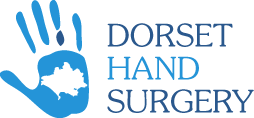Golfer’s Elbow
Golfer’s elbow (or medial epicondylosis) is a degenerative condition affecting the insertion of the tendons into the bone on the inside part of the elbow. These tendons are connected to the muscles that enable us to bend (flex) both the wrist and fingers. The condition is more common in middle age (i.e. 40-55 years of age) and tends to affect men more than women. Interestingly, less than 10% of affected people are golfers.
Golfer’s elbow is thought to result from repetitive small tears to the tendon insertion causing characteristic pain and tenderness over the medial part of the elbow with activities such as gripping and lifting. The pain can radiate down the forearm.
Diagnosis
Treatment options
Here are available treatments for Golfer's Elbow:
Resting from activities that exacerbate the pain will often help to improve symptoms. Poor sporting technique can worsen symptoms. Advice regarding this from a sports coach or physiotherapist can be helpful. A short course (up to six weeks) of anti-inflammatory medication taken regularly has been shown to improve symptoms, albeit in the short term. Excellent benefit can be obtained from physiotherapy .
The physiotherapist will use a combination of manual techniques, ultrasound and strengthening exercises (eccentric-based regimen). The use of splints/clasps and acupuncture may also derive benefit for some patients.
Steroid injections
Injections for tennis elbow has been a topic of some discussion over the past few years. Traditionally injection of local anaesthetic and corticosteroid has been used with good benefit. Research has emerged suggesting that whilst these injections can improve symptoms for a while, they may make the pain come back worse than ever. We would therefore suggest that these injection be used sparingly now in the treatment of Golfer’s elbow.
Injection of blood products
Injections for tennis elbow has been a topic of some discussion over the past few years. Traditionally injection of local anaesthetic and corticosteroid has been used with good benefit. Research has emerged suggesting that whilst these injections can improve symptoms for a while, they may make the pain come back worse than ever. We would therefore suggest that these injection be used sparingly now in the treatment of Golfer’s elbow.
Shockwave therapy
This is a non-invasive technique which uses high energy focused sound waves onto the area of injury. This is thought to promote healing of the injured tendon insertion.
